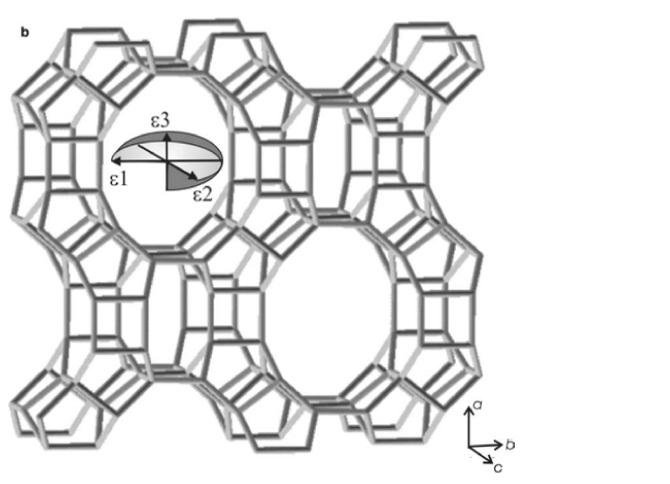"On the elastic behavior of zeolite mordenite: a synchrotron powder diffraction study"
- Authors
G.D. Gatta, Y. Lee
- Journal
Physics and Chemistry of Minerals
Vol.32, No.10, pp.726-732, 2006.02 - DOI
Abstract
The high-pressure elastic behaviour of a synthetic zeolite mordenite, Na6Al6.02Si42.02O96·19H2O [a=18.131(2), b=20.507(2), c=7.5221(5) Å, space group Cmc21], has been investigated by means of in situ synchrotron X-ray powder diffraction up to 5.68 GPa. No phase transition has been observed within the pressure range investigated. Axial and volume bulk moduli have been calculated using a truncated second-order Birch–Murnaghan equation-of-state (II-BM-EoS). The refined elastic parameters are: V 0=2801(11) Å3, K T0= 41(2) GPa for the unit-cell volume; a 0=18.138(32) Å, K T0(a)=70(8) GPa for the a-axis; b 0=20.517(35) Å, K T0(b)=29(2) GPa for the b-axis and c 0=7.531(5) Å, K T0(c)=38(1) GPa for the c-axis [K T0(a): K T0(b): K T0(c)=2.41:1.00:1.31]. Axial and volume Eulerian finite strain versus “normalized stress” plots (fe–Fe plot) show an almost linear trend and the weighted linear regression through the data points yields the following intercept values: Fe(0)=39(4) GPa for V; Fe a (0)=65(18) GPa for a; Fe b (0)=28(3) GPa for b; Fe c (0)=38(2) GPa for c. The magnitudes of the principal Lagrangian unit-strain coefficients, between 0.47 GPa (the lowest HP-data point) and each measured P>0.47 GPa, were calculated. The unit-strain ellipsoid is oriented with ε1 || b, ε2 || c, ε3 || a and |ε1|> |ε2|> |ε3|. Between 0.47 and 5.68 GPa the relationship between the unit-strain coefficient is ε1: ε2: ε3=2.16:1.81:1.00. The reasons of the elastic anisotropy are discussed.












